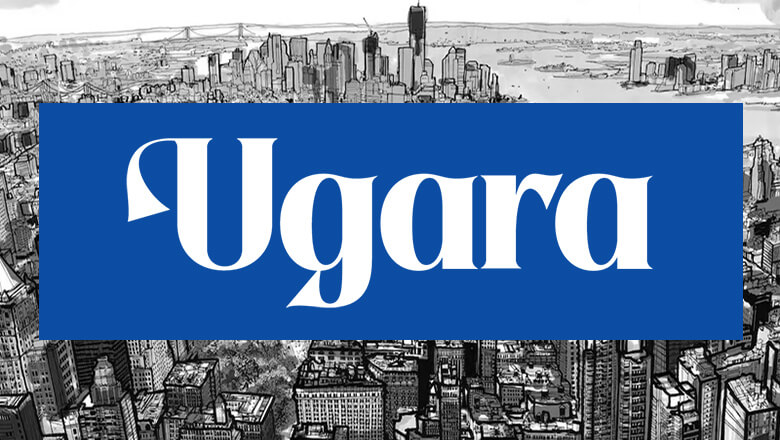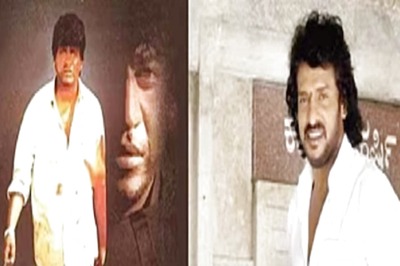
views
23 French Bangs Styles to Inspire
Classic French Bangs Among seemingly endless variations of French bangs, these options represent as close to a traditional French bang style as possible. Layers at play: Whether wisps fall into your face or you style them toward the side of your face, this classic version is all about layers. 90’s blend: This variation blends soft-cut bangs into neat cascading layers reminiscent of the 1990s “Rachel from Friends” haircut (with bangs). Go wispy: Wispy French bangs showcase shorter pieces that sit in the center of your forehead and get longer as they reach the sides. Thick and tapered: Who says you can’t have French bangs with a more blunt style? A thicker set of bangs can still taper as they grow into the longer layers of hair. Frontal fringe: French bangs are cut at different lengths so the fringe is more messy, and unkempt, yet alluring. Chunky layers: Chunky bangs are mostly one length, which can side-sweep down into equally chunky longer layers for a dramatic look. Overgrown: These French bangs hit the top of the eyes and look like they’ve been growing out for a while, proving that French bangs look great at any stage. Dangerous curves: Who says French bangs have to be styled straight? Cut them to highlight naturally wavy hair for a vintage look that screams retro all the way.
Unique Takes on French Girl Bangs These cuts prove that some French bangs can go their own way, depending on hair length, texture, or styling needs. Keep it short: While not quite a set of baby bangs, these French bangs start on the short side, but are just as soft and romantic as their longer counterparts. Side swept: French bangs look more intense when styled to the side, yet remain carefree in natural-looking layers. Center part: Go for a center part with a set of French bangs that gently taper to the sides for a youthful style every time. Thick and thin: This variation features a thicker set of bangs that blend into thinner wispy layers of hair, which offers the best of both worlds. Styled curly: Those with curly hair will love styling their bangs shorter in the center only to grow more shaggy as they meet the longer layers of hair. Uneven: French bangs can appear uneven on purpose when the fringe is styled in pieces that don’t cover the forehead entirely. Cheek-length: Sometimes, French bangs are barely bangs at all. This version allows bangs to gently blend into longer side layers so the forehead appears mostly visible. Clip-on bangs: For those who don’t have the patience to grow French bangs, simply clip them on! Make sure the color matches up and you clip the hair behind the hairline for a seamless finish
Bangs for a particular hairdo or style When you need your French girl bangs to match a style or look, these choices have you covered. Full bangs with an up-do: French bangs can be the focus of any formal hairdo when you wear your hair. They’ll frame the face for a feminine, natural look. Thicker fringe with ponytail: When a tight ponytail is too severe for you, French bangs keep your forehead and hairline looking softer with a layered fringe. From the center: Play with your style by letting longer fringe layers frame your face, which is ideal when you have mostly all-one-length hair. Tight and short mullet: Take advantage of the retro look of French bangs to complement your trendy mullet do. You’ll have endless layers to frame your face! Bangs with a French twist: Go totally French by combining the wispy pieces of French bangs with a dramatic French twist. All curtain: Take on a 1970s look with flipped-up curtain bangs to blend into longer flipped-up layers; you’ll be ready for a night on the town. French pixie:For those who love their short pixie cut, simply get short baby bangs in a wispy style that blends in with the rest of this whimsical haircut.
How to Cut French Bangs
At the salon: Take a photograph of your favorite French bangs style with you, so your stylist knows what you’re going for. Listen to their advice, since they may want to tweak your desired style to suit your face shape or hair texture better. Likewise, if you want to put less effort into styling your bangs, they may recommend an amount of layering that works for you.
DIY French Bangs: More and more people are cutting their own French girl bangs with the help of social media tutorials. Make sure the video you land on is the right one for you to follow to achieve this latest TikTok hair trend. Ahead are some general guidelines on cutting French bangs yourself. Sectioning Be sure to section your hair using clips before cutting your bangs. You’ll end up with a larger (and possibly thicker) area of bangs and longer layers if you section a larger area of hair beforehand; the same is true for a smaller area of hair. Fringe width It’s better to go with a thinner width to start and add on, so you don’t end up with too much bang for your buck! Length As with width, you can always cut your bangs shorter, but you can’t get length back. Always cut hair while dry and start around the bridge of your nose for your first attempt.
How to Style French Bangs
Styling your French bangs is as important as getting them cut. Follow just a few basic steps to help your bangs reach French girl status in no time. You can build on or alter these basic steps to best fit the style of French bangs you have. Preparation Blow dry your hair until it’s nearly dry. Create a middle part and section the front of your hair (whatever hits the forehead) to prepare it for styling. If you’re worried about drying out your hair, you can apply a protection spray to your hair before blow-drying. Style bangs Blow dry your separated front section of hair at a 90-degree angle while holding them with a round brush. At the same time, pull the hair up and away from your face to give them a boost of volume. Do this until your bangs are completely dry. Repeat Repeat the above step with the sectioned-off hair on each side of your face. This may take longer, depending on how many layers your fringe has. Finish Use a texture spray so your hair stays fabulous all day long.
What are French Bangs?
French bangs are among 3 or 4 basic types of bangs. They include blunt bangs that go straight across, curtain bangs that flip outward, and baby bangs that are super short. French bangs fall somewhere in between wispy, choppy, and tousled, hence the “effortless” look. EXPERT TIP Jasmin Todd Jasmin Todd Curly Hair Specialist Jasmin Todd is a Curly Hair Specialist and the Owner of Austin Curls in Austin, TX. With over 20 years of experience, she specializes in cutting and styling naturally curly hair. Jasmin trained at the world-famous Ouidad salon and is Ouidad certified. In 2022, Mane Addicts named Austin Curls as one of the Top U.S. Salons for Curly Hair. Jasmin Todd Jasmin Todd Curly Hair Specialist A French bang is thicker and longer than a traditional straight-across bang. It's meant to have a softer, more flirtatious look around the eyes, with a natural flow around the eyebrows and temples. Unlike a blunt cut bang, a French bang has wispy ends and is usually cut with a razor for a softer, more textured look.
Where did French bangs originate? Some credit French bangs with actress and 1960s icon, Brigitte Bardot. Her long, shaggy bangs were sometimes referred to as curtain bangs. English actress Jane Birkin’s similar style also warranted the title of “Birkin Bangs.
French bangs are currently trending on social media. Wherever you look on TikTok, Instagram, and Facebook, tutorials on French bangs seem to be everywhere. French bangs have reimagined our fascination with Parisian chic thanks to guides on cutting your own, before and afters at the salon, or styling tips.
What is the difference between French bangs and curtain bangs? Brigitte Bardot’s 1960s bangs are often called curtain bangs. They are typically longer at the side and curl or flip outwards toward the sides of the face. While curtain bangs are considered a variation of French bangs, French bangs are a more general term for a wispy, non-blunt-fringe that features a variety of layers. They can part in the center, be side-swept, or fall mostly to the sides of the forehead.
What is the best way for bangs to grow out? Hair texture and the type of bangs you have often determine how easy it’ll be to grow out your bangs. Those with curly hair or a blunt set of bangs may need a longer amount of time to grow out. One way to make the process as pain-free as possible is to get your bangs trimmed every few weeks so they skip the most awkward phases. Once you’re able to, pinning back your long bangs is another way to keep the growing-out period looking smooth
Are French girl bangs right for you?
Face shape Because French bangs have so many variations, they seem to work with any face shape. However, if you have a shorter forehead, it’s best to choose a longer variety that doesn’t cover the entire forehead area.
Hair texture Talk to your stylist beforehand to determine whether French bangs suit your hair thickness. If you have curls or waves, you can still rock beautiful French bangs, but it may involve a different styling process and more frequent trims (or less).
Age Older women are wearing bangs more these days for a youthful, yet sophisticated look. French bangs are softer than overly blunt variations that only go straight across, which is why you may see them on the likes of Jennifer Coolidge, Monica Bellucci, and Helen Mirren.
The French use a very specific equation for getting bangs. Grab your calculator or a paper and pencil for a little basic math! First, measure your forehead by placing your fingers horizontally between your forehead and the top of your eyes. If the height equals 3 fingers, it equals 1. Four fingers equal a 2, and 5 fingers equal a 3. Then, figure out which part of your face is the widest. If your forehead is the widest part of your face, it equals 1. Your cheeks equal a 2, while your chin equals a 3. Now, is the distance between your eyebrows larger or smaller than the width of one eye? Larger equals 1, while smaller equals 2. The three-digit number you end up with determines the equation. Your face may not be well-suited for bangs if your number equals 111, 121, 221, or 231. Resulting numbers of 222, 321, 312, 212, or 322 may work well with bangs. Ending up with 131, 112, 122, 132, 232, 311, 331, or 332 usually means you’re destined for curtain bangs.














Comments
0 comment